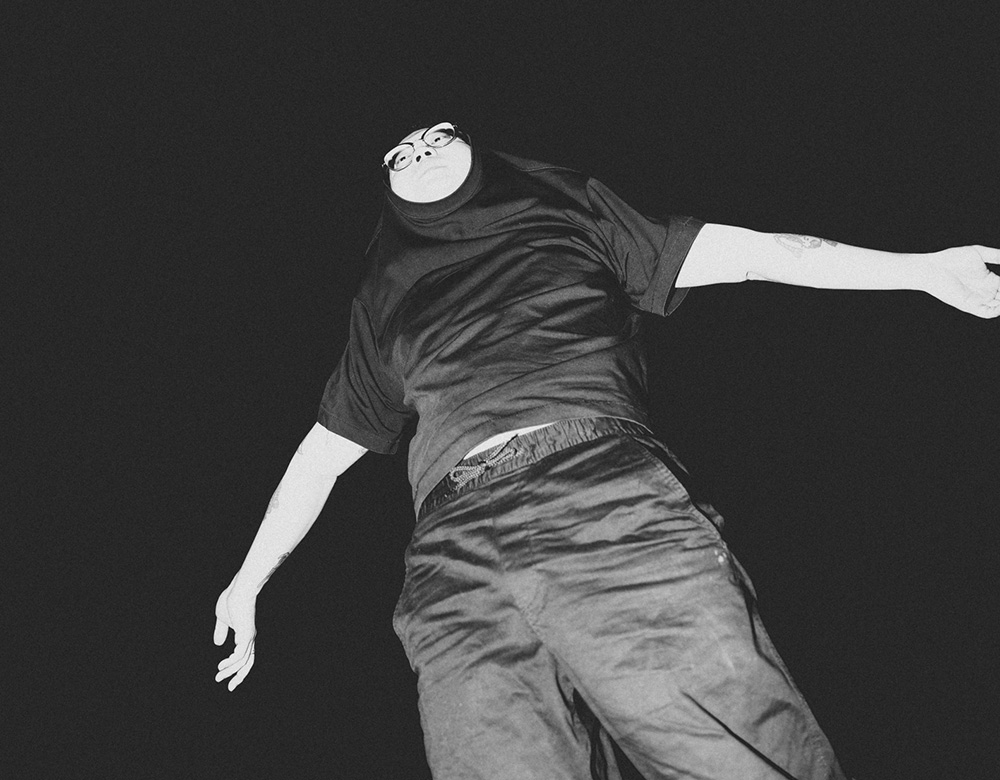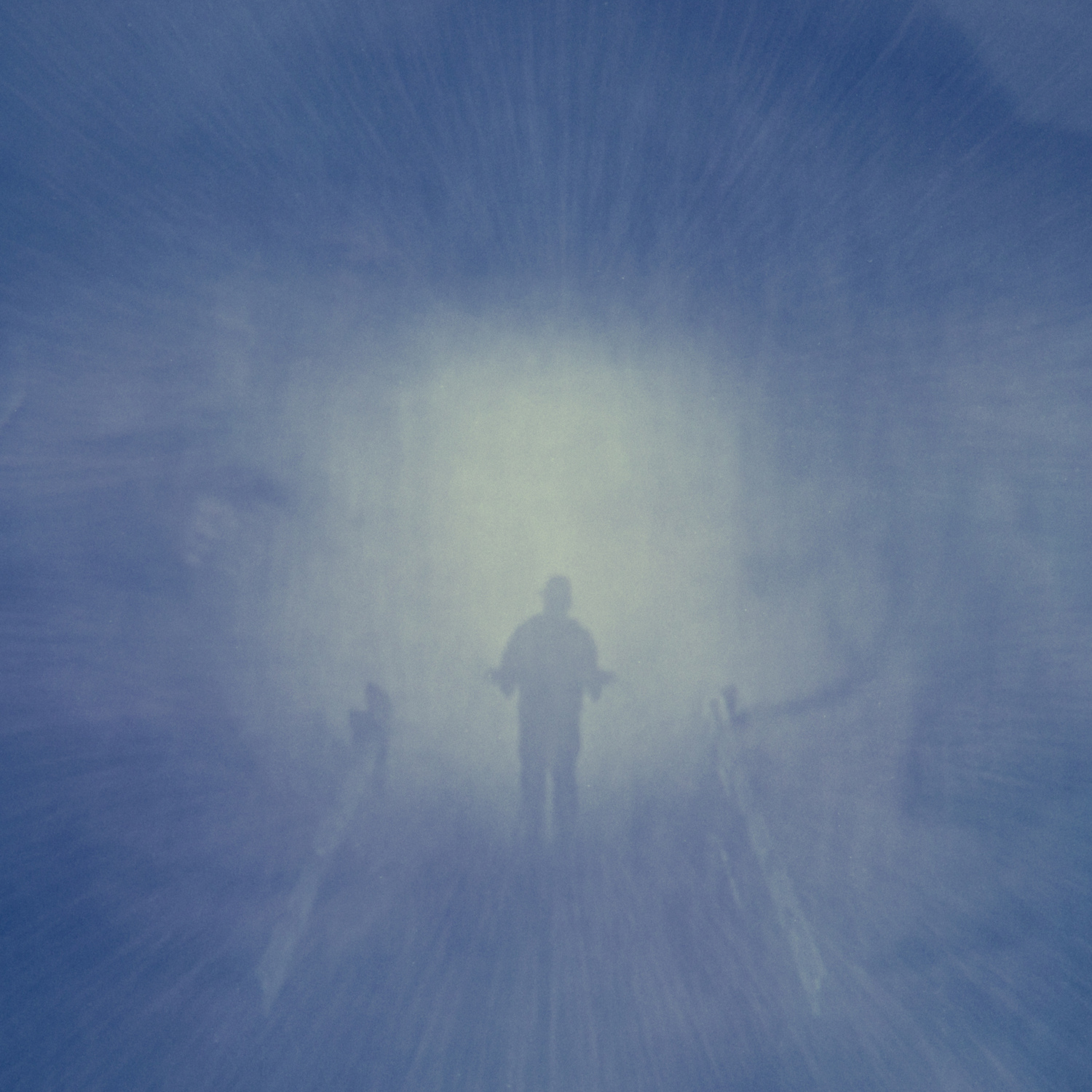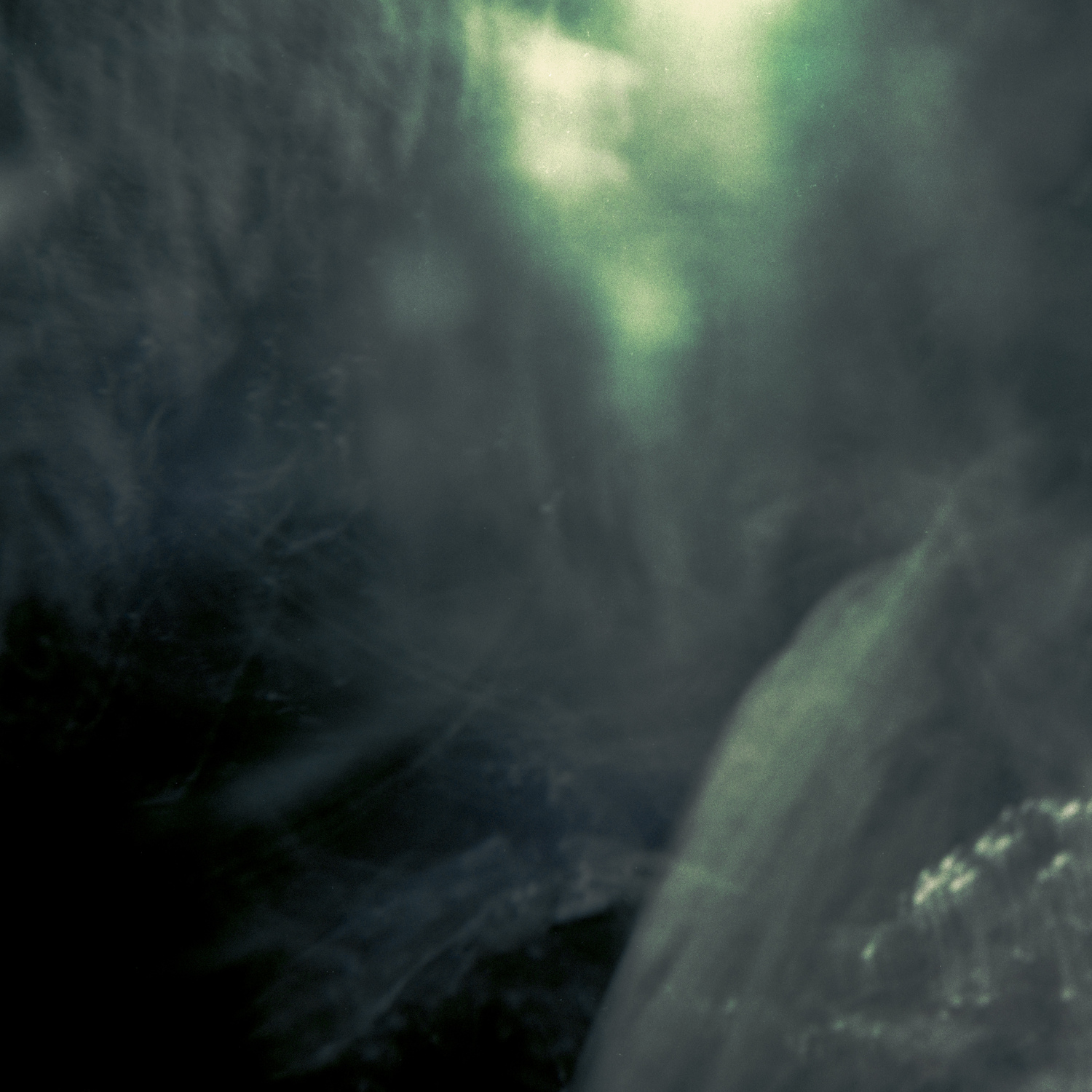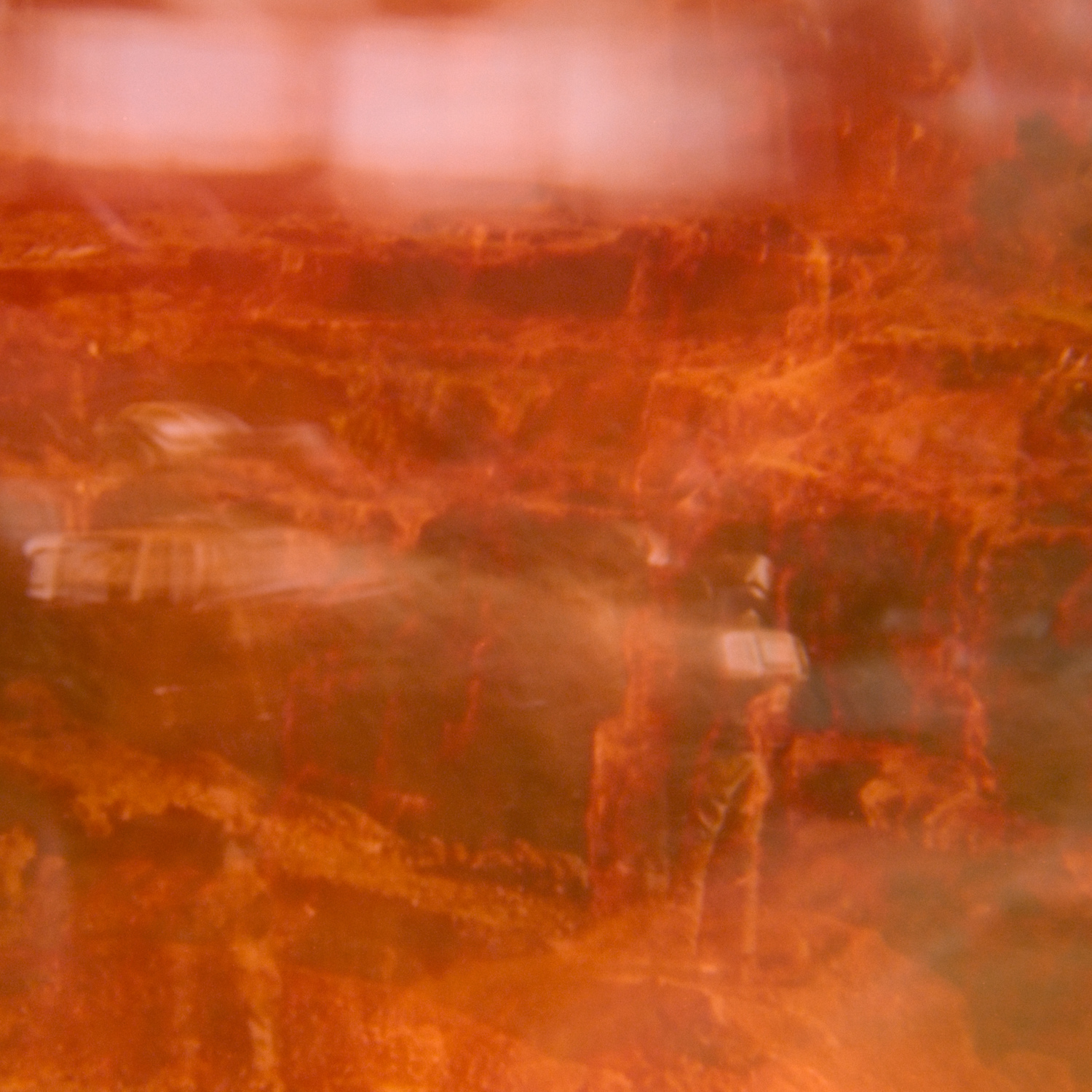ERR-ik
Year of birth: 1988
Where do you live: Taipei, Taiwan
Your education: Academy of Art University, San Francisco – Photography MFA (On Leave of Absence)
Describe your art in three words: Atmospheric, Poetic, Hazy
Your discipline: Photography, Visual and Graphic Design, Motion picture
Website | Instagram

What inspired you to explore the intersection of time and image in your “42” project?
I have always loved movies, ever since I was a child. This art form has shaped the way I think, influenced my daily life, and even led me into photography. Now that I am 36, I still watch almost one movie or a few TV episodes every day. This shows how important film is in my life.
This project started from an idea I had eleven years ago in a class at AAU. One evening, I was watching a movie in my rented apartment and thinking about a class assignment. Suddenly, I wondered what would happen if I used long-exposure techniques on movie clips. Since each second of a movie contains 24 frames, I imagined capturing them into a single still image through long exposure. At first, I did not fix the exposure time; instead, I experimented based on scenes I liked. I created a few test images and shared them in class.
Although I paused this idea for a while, it stayed in my mind for over ten years. I kept revisiting it, asking questions like: Which movies should I use? Should I also include TV shows? Should the exposure time be the same for all clips?
Then, one day, I watched The Hitchhiker’s Guide to the Galaxy again. In it, the number “42” is called “the ultimate answer to life, the universe, and everything,” suggesting a universe that is random and chaotic. This concept really caught my attention.
Feeling inspired, I continued the project, centering it around “42.” I chose 42 films and TV shows that had strongly influenced me or that I truly loved. From each one, I picked a 42-second clip, used a 42-second long exposure to photograph it, and finally printed the result at 42 × 42 cm.
To me, “42” is more than just a number—it hints that even something that seems meaningless can hold meaning. This matches my artistic philosophy: art should not be about pleasing others, but about finding personal fulfillment. That is the core spirit of my work.
 ERR-ik | Entering
ERR-ik | Entering
How do long-exposure techniques help you convey the sense of nostalgia and melancholy in your work?
Actually, I didn’t intend to convey any specific emotion or story. However, if viewers can sense nostalgia or sorrow through my work, I’m genuinely happy about that. It’s similar to how a single movie can evoke different responses in different people. Perhaps the emotional tone emerged from the subconscious choices I made while selecting the scenes to photograph.
As for the nostalgic quality, it might come from using a toy plastic camera. I like the contrast between a film that costs millions of dollars to produce and a camera that only costs a few dollars, which adds an interesting tension. Also, using a plastic lens with long exposure helps avoid the obvious LED dots that digital cameras often capture, resulting in a softer look. This is why I ended up using a plastic camera for this series.
Can you describe the creative process behind merging dynamic film and television sequences into still images?
During my shoot, I used a simple yet creative approach. Imagine photographing a running horse by taking one photo every 0.0417 seconds. In one second, you end up with 24 images. Then, if you play these 24 stills over a single second, you get a one-second video. Afterward, I use a long-exposure shot of that “one-second” video to create a single image with a motion-blur effect.
I’ve conducted many interesting experiments. At first, I wanted to use 182 seconds of exposure time because it corresponds to the shortest distance light travels from Earth to Mars, which aligns with my love for sci-fi. However, I quickly realized that 182 seconds was far too long, making the final image so abstract that it exceeded normal recognition. In the end, I settled on 42 seconds, which turned out to be more suitable—winning this “battle of choices.”
I also faced many unexpected situations. Some clips I initially thought I would love ended up looking completely different from what I had envisioned. I had to rewatch those movies, sometimes more than ten times, constantly viewing and testing. Even a slight shift of one second—forward or backward—in the 42-second exposure can lead to a drastically different outcome.
Overall, the creative process felt like a series of experiments. I switched back and forth between watching films and shooting until I could finally capture the flowing motion of each video segment in these still images, each with its own unique beauty.
 ERR-ik | Organic Life
ERR-ik | Organic Life
In your work, how do you see the relationship between memory, time, and imagery?
For me, this work feels like a reconstruction of both time and imagery. During the creative process, I noticed that many of my memories take shape more like separate still photos rather than complete, moving images. It’s almost as if my brain automatically merges a series of events into a single, blurred photo that carries hidden clues.
When I revisit this series, I keep wondering: what kind of storyline or emotion might lie behind each still frame? Sometimes I realize that the scenes I piece together do not exactly match the actual movie footage—just like how memories often need our consciousness to fill in the gaps. So, even though this is fundamentally a straightforward form of secondary creation, the final result feels like a brand-new work. I’m not sure how other people’s memories or minds operate, but I’m proud to see the world in this way.
What do you hope viewers experience when they interact with your abstract photographic works?
In this series’ exhibition, I designed a “guessing game” by hiding the name of the original movie or TV show under a small flap. I hope viewers will first feel the mood or emotion of the image without knowing its source, and then flip open the flap to see where it comes from. I really enjoy watching their reactions when they discover the title—some people exclaim, “I knew it!” while others are surprised, or remember seeing it during their childhood. If my work inspires them to revisit certain films or find new ones to watch, I feel it’s a great result.
I’m not too concerned about whether each viewer gains a specific insight or emotion. If someone feels nothing, that’s also fine. As I often say, “If you like my work, that makes me happy; if you don’t, that’s totally okay too.” I want art to stay open for everyone, so each person can experience it in the most natural, comfortable way for them.
 ERR-ik | The Dream
ERR-ik | The Dream
Sci-fi films and rock music are recurring influences in your art. How do these themes shape your creative perspective?
Science fiction films and rock music have had a profound influence on my creative viewpoint. I’m especially drawn to space-related claustrophobic themes, like in Event Horizon or Pandorum, which show a sense of loneliness, entrapment, and the inner struggle between different personalities under extreme conditions. In some way, this resonates with my own inner state. At the same time, I also love alien lifeforms, such as those in Alien, or any other imaginative and surreal settings. These highly inventive sci-fi works have deeply shaped my preferences for art design and visual style.
When it comes to music, I’m fascinated by the “wall of sound” created by distorted guitar, layers of repeating riffs, and powerful chords—giving me the feeling of being wrapped in sound waves, as if in another dimension. This idea of a “sound wall” is also reflected in my abstract photography. I don’t want to limit myself to any single form of expression. Like the films and music I enjoy, I want my creations to remain diverse and open. You could say I’m both a “Nerd” and an “EMO kid,” embracing many different styles with passion.
How does your fine art photography differ from your work in fashion and band photography? Are there any common threads that tie them together?
In my view, fine art photography and commercial photography—like fashion or band shoots—have very different purposes. Fine art is mostly about personal creative desire, expressing myself through the camera, while commercial photography focuses on meeting clients’ needs. Luckily, it feels like I have a switch in my mind that lets me move easily between the two.
Although the goals of art and commercial photography differ, what they share is that I fully use my professional skills to get the job done. I often joke that I’m a “merciless photo-taking machine,” because when I’m on an assignment, I throw myself into it completely. But once I finish the client’s brief, I start capturing images I personally enjoy. For example, when shooting stage performances, I like to concentrate on details—like a singer’s facial expression, a mouth at the microphone, a hand on the guitar strings, or a foot on the pedal. These close-ups might not be what the media wants, but they satisfy me because it’s my way of pleasing myself.
I’ve also come up with a tongue-in-cheek nickname—“the merciless bento killer.” At many events, the organizer usually provides a boxed meal (bento) for the photographers, and sometimes I try to snag an extra one. I might even discuss with other photographers which organizer gives out the tastiest bento. These little anecdotes, while not directly related to photography, help me find some fun in the high-pressure commercial environment and show a bit of my spontaneity and sense of humor outside work.

Leave a Reply